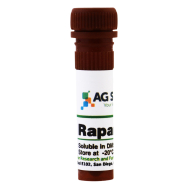It has been 60 years since the first report of erythromycin in 1952. Over the course of this 60 years the macrolide antibiotics—14- and 16-membered macrolactams—have been followed at intervals by the lincosamides, streptogramins, azalides and now the ketolides.
It has been 60 years since the first report of erythromycin in 1952. In the decades since, macrolide antibiotics (a class of antibiotics consisting of 14- and 16-membered macrolactams) have been followed at intervals by the discovery of lincosamides, streptogramins, azalides and now the ketolides.Mechanism of Action
Erythromycin and clarithromycin, and other macrolides bind to the 50S subunit of the bacterial ribosome and physically prevent the elongation of nascent polypeptide chains. The 50S ribosomal macrolide-binding site is composed of portions of the 23S rRNA subunit, ribosomal protein L4 and ribosomal protein L22. Bacteria may acquire antibiotic resistance when the genes encoding these components sustain mutations that alter the drug binding site.What are Polyketides?
Polyketides are natural products, many of which have applied potential as pharmaceuticals. Examples of such polyketides include erythromycin (anti-bacterial), Nystatin (antifungal), avermectin (anti-parasitic), rapamycin (immunosuppressant) and daunorubicin (anti-tumor). The Gram-positive bacteria of the genus Streptomyces are the main producers of polyketides, and the genetics and biochemistry of polyketide biosynthesis in these organisms are relatively well characterized.
During earlier work, Shaw had discovered that LKB1 activates a metabolic master switch. The switch, an enzyme known as AMPK, acts like a gas gauge by sensing how much energy a cell has. When a cell has plenty of energy, AMPK remains inactive and the cell carries out its normal processes. If a cell runs on empty, LKB1 turns on AMPK, which puts a damper on cell growth and proliferation. When LKB1 is absent or disabled, cells facing starvation never get the message and simply continue to divide.Right A Lkb1+/- mouse before and after treatment with rapamycin. Image: Courtesy of Dr. David R. Vera, University of California, San Diego. Press release June 15, 2009, Salk Institute for Biological Studies.
Polyketide Classifications
Polyketide antibiotics of bacterial origin can be grouped into two major categories, type I and type II, based on the compound structures and biosynthetic mechanisms. Type I polyketides are synthesized by large multi-functional enzymes, while type II polyketides are assembled by dissociated enzymes. Polyketide natural products are known to possess a wealth of pharmacologically important activities, including antimicrobial, anti-fungal, anti-parasitic, anti-tumor and agro-chemical properties. These metabolites are ubiquitous in distribution and have been reported from organisms as diverse as bacteria, fungi, plants, insects, dinoflagellates, mollusks and sponges. The wide spectrum of activity of polyketides makes them economically, clinically and industrially the most sought-after molecules. Many polyketide products are well-known compounds such as Erythromycin A (a broad-spectrum antibiotic), the anti-helmintic agent avermectin or the immunosuppressants FK506 and rapamycin. Oleandomycin, rifamycin, lovastatin, oxytetracycline and resveratrol are a few more of the thousands of polyketides discovered so far. Polyketides are usually categorized on the basis of their chemical structures.AG's Polyene Macrolide Antibiotics
| Product Code | Product Name | CAS |
| A-2651 | Avermectin B1A | 65195-55-3 |
| A-2661 | Avermectin B1B | 65195-56-4 |
| A-1077 | Amphotericin B | 1397-89-3 |
| A-2667 | Azithromycin | 83905-01-5 |
| B-1009 | Brefeldin A | 20350-15-6 |
| C-2603 | Candicidin | 1403-17-4 |
| C-2645 | Clarithromycin | 81103-11-9 |
| C-2282 | Daunorubicin | 23541-50-6 |
| D-2525 | Dirithromycin | 62013-04-1 |
| E-2415 | Echinocandin B | 54651-05-7 |
| F-2427 | Filipin | 11078-21-0 |
| E-2463 | Erythromycin A | 114-07-8 |
| F-2425 | Fidaxomicin | 873857-62-6 |
| F-1030 | FK-506 | 104987-11-3 |
| L-1043 | Lovastatin | 75330-75-5 |
| N-2409 | Nargenicin A1 | 70695-02-2 |
| N-2593 | Nargenicin B1 | 75923-01-2 |
| O-2545 | Oleandomycin | 3922-90-5 |
| O-1063 | Oligomycin A | 579-13-5 |
| O-1064 | Oligomycin B | 1105-94-5 |
| O-1066 | Oligomycin C | 11053-72-5 |
| R-1018 | Rapamycin | 53123-88-9 |
| R-1014 | Resveratrol | 501-36-0 |
| R-2611 | Roxithromycin | 80214-83-1 |
| S-2793 | Spiramycin | 8025-81-8 |
| T-2641 | Tilmicosin | 108050-54-0 |
| T-2567 | Troleandomycin | 2751-09-9 |
| T-2665 | Tulathromycin | 217500-96-4 |
| T-2667 | Tylosin | 1401-69-0 |
| V-2501 | Virginiamycin | 11006-76-1 |
Sources
- Hopwood, David A. “Genetic Contributions to Understanding Polyketide Synthases.” Chemical Reviews, vol. 97, no. 7, 10 Nov. 1997, pp. 2465–2498., doi:10.1021/cr960034i.


